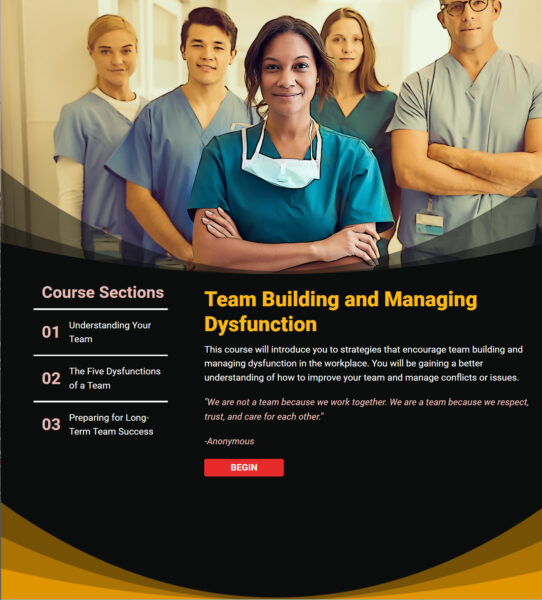Welcome to part three of this four-part blog series. In this series, I will be providing a participant account and an inside look at Thrive Talent’s Fundamentals of Leading People program. Each week, I will share an overview of the week’s content and recap of what we discussed and learned in our facilitated live sessions. If you haven’t yet, head on back to week one: Awareness of Self and Others and week two: Leading Individuals to read about the program content in order.
Week 3 eLearning Content
In weeks one and two, our cohort made great strides in discussing how awareness plays a major part in the transition from an individual contributor to a leader and focused our dialogue around leading individuals as part of that transition. In week three, we took the skills gained in the first two weeks a step further and truly dove into what it means to be a leader of teams and walked away with tangible tools for developing, motivating, and engaging with people in and out of the workplace. This week’s eLearning topics included:
- Cultural and generational differences in the workplace
- Inclusivity, collaboration, and conflict resolution
- Team building and development
- Holding teams accountable
- Project management
- Managing dysfunction

Week 3 Virtual Instructor-Led Training
In this week’s live session, Negotiation Skills, our cohort spent a lot of time discussing why negotiating is difficult for many of us and how being a better negotiator can serve us well as a leader and strengthen our working relationships within our teams. One of the best parts about this live session was how our facilitator took the subject of negotiating back to square one. When first prompted on what we thought about negotiation, the first examples that came to mind for many of us were topics like salary negotiation or buying a house and the takeaway was that those can be tense, uncomfortable moments. Our facilitator did a great job of questioning us on why negotiating is tense and uncomfortable at times, and we spent a lot of our session discussing how the intensity of negotiating and the subsequent discomfort that it brings really is determined by the relationship you either have and/or desire to have with the person you’re negotiating with. For example, we had great dialogue about how negotiation with a stranger feels very different than negotiating with a spouse or manager –negotiating with someone that you must maintain a positive relationship with is difficult and that is where a lot of the hesitation and discomfort stems from. We were able to pull from what we learned in week two about having tough conversations and apply a lot of those same skills and tactics to the very specific tough conversation of negotiating. In addition to talking about how to maintain good working relationships throughout a negotiation, we also dove into the following topics:
- How to determine when negotiation is necessary
- Understanding why conflict may occur
- Determining your non-negotiables
- How to develop an advantage
- Following up after a negotiation
This live session was very valuable, and I left the session with a better understanding of how to navigate negotiation in the workplace as a leader. In addition to the skills and tactics that we discussed, the biggest benefit to this session was the conversation around how to negotiate in a way that strengthens working relationships and builds mutual respect among team members.
Next week is the final week of the program and I am eager to bring all of the knowledge gained together in Week Four: Operational Skill Building.